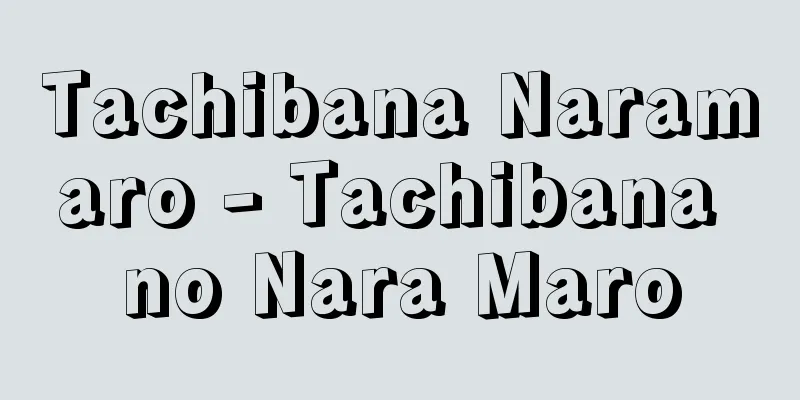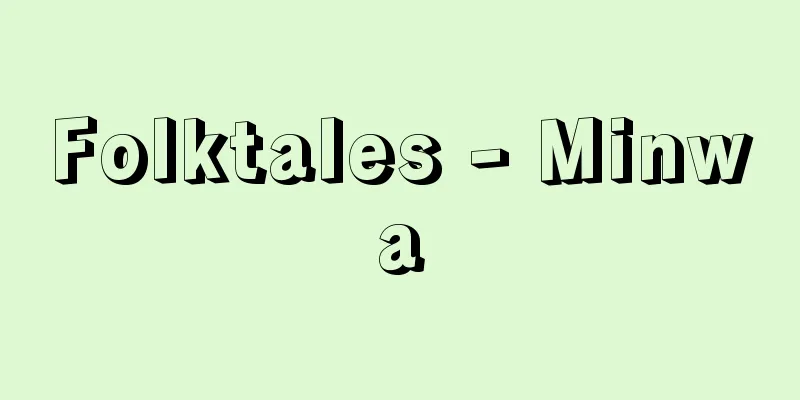Club - Club

|
The most primitive weapons and hunting tools used to kill or injure an object by striking it with a blow. Examples of this include the ring stone axes seen in the Neolithic period in East Asia, the multi-headed ring stone tools of Korea and Japan, and the multi-headed block stone tools of Inner Mongolia (China). In the prehistoric period in the Andes of South America, clubs crowned with ring or star-shaped stones were used as weapons. They are widely distributed among modern ethnic groups and come in a variety of shapes. They developed especially in Oceania. The Micronesian Gilbert Islands (Kiribati) clubs are made by carving hardwood into a sword shape with shark teeth embedded on both sides and secured with coconut rope. A short club called a proto, reported in the Palau Islands, has a thin handle and a hexagonal body with carvings of human faces, giant shells, shark teeth, and other shapes. In Melanesia, clubs carved from a single piece of wood are also common. New Caledonian clubs have a thick handle and a head shaped like a bird or mushroom. In contrast, the New Hebrides (Vanuatu) ones are longer and heavier, and have a stepped bulge at the end of the handle. This is a device to prevent the string attached to keep the club from slipping out. Short clubs that can be held with one hand are widespread in eastern Papua New Guinea and the Solomon Islands, and the types with ring-shaped, star-shaped, and pineapple-shaped stones mentioned as prehistoric remains are known in northeastern Papua New Guinea. In addition, the Sioux society of Native Americans use clubs with thorns on the top, and in Africa, clubs with knobbed tips are used. Various reports leave no doubt that these clubs were used as weapons, but they were not without other uses. For example, they are known to be used by seal hunters and halibut fishermen on the northwest coast of America to stun or finish off prey that has already been impaled, and some of the same type as the bird's head club from New Caledonia mentioned above have been used as farming plows. However, those with elaborate decorations and shapes should be considered to have an extraordinary character. The small club called patou by the Maori in Polynesia is said to be a weapon used to strike a human head. However, the flat striking part, like an axe, is often inlaid with intricate carvings that combine birds or humans with Maori patterns, and it functioned more as a symbol of sovereignty than as a practical tool. In addition, a somewhat long, paddle-shaped club called a patuki also plays an important role in ritual dances. In Melanesia, a connection with pig rituals has also been noted, and clubs expressing mythological views of the universe have also been found. [Yuji Seki] ©Katsuya Nishikawa "> Major clubs of the world Source: Shogakukan Encyclopedia Nipponica About Encyclopedia Nipponica Information | Legend |
|
打撃を加えることで対象物を殺傷するもっとも原始的な武具、狩猟具。東アジアの新石器時代にみられる環状石斧(せきふ)、朝鮮や日本の多頭環状石器、内モンゴル(中国)の多頭塊状石器もこれに属する。南米のアンデス地帯でも先史時代に、環状、星状の石を冠した棍棒が武器として用いられた。 現代諸民族の間でも広く分布し、形状も多様である。とくにオセアニアで発展を遂げた。ミクロネシアのギルバート諸島(キリバス)の棍棒は、硬木を剣状に削り、両側にサメの歯を埋め込んで、これをヤシ縄で固定している。またパラオ諸島で報告されているプロットとよばれる短棍棒は、握りが細く、六角柱の胴部に人面、シャコガイ、サメの歯などの彫刻が施されている。メラネシア地域でも木片を削ったものが一般的である。ニュー・カレドニアの棍棒は、握り部分が太く、頭部は鳥やキノコの形状をなしている。 これに比べニュー・ヘブリデス諸島(バヌアツ)のものは、長さも重さも増し、把握側の末端が段をなして膨らんでいる。これは、棍棒が手元を離れないように取り付けられた紐(ひも)が抜けるのを防ぐためのくふうである。片手で握れる短棍棒は、パプア・ニューギニア東部、ソロモン諸島に広がり、先史時代の遺物として触れた、環状、星状、パイナップル状の石がつく型は、パプア・ニューギニア北東部で知られている。このほか北米先住民(ネイティブ・アメリカン)のスー人の社会では、頭部にとげを植えた棍棒を、またアフリカでも先端にこぶのあるものを使っている。 さまざまな報告書によって、これらの棍棒が武具として用いられたことには疑いの余地がないが、他の用途がなかったわけではない。たとえば、アメリカ北西海岸のアザラシ猟、オヒョウの漁に従事する人々が、気絶したり、すでに突き刺された獲物にとどめを刺す目的で使用していることも知られているし、既述のニュー・カレドニアの鳥頭棍棒と同じ型のものは、農耕用の鋤(すき)として役だっているものもある。しかし、なにより装飾や形状に技巧を凝らしているものは、非日常的な性格が付随していると考えるべきである。ポリネシアのマオリ人のパトゥーと称せられる小型棍棒は、人間の頭部を打つ武具といわれている。しかし、まさかりのように扁平な打撃部分は、しばしば鳥や人間とマオリ特有の文様とが組み合わさった細かい彫刻で埋められ、実用具としてより、主権者のシンボルとして機能していた。また、パトゥーキとよばれる、やや長めで櫂(かい)の形状をもった棍棒も、儀礼的な踊りの場面で重要な役割を果たしている。このほかメラネシアでも、豚の儀礼との関連が指摘されているし、神話的宇宙観を表現した棍棒もみつかっている。 [関 雄二] ©西川勝也"> 世界のおもな棍棒 出典 小学館 日本大百科全書(ニッポニカ)日本大百科全書(ニッポニカ)について 情報 | 凡例 |
<<: Compost - Compost (English spelling)
Recommend
Dosen - Dosen
A monk from the Tang Dynasty in China. Founder of...
Marigny, English
Born: Around 1260. Lyon-Laforet [Died] 1315.4.11/3...
Osaka Municipal Museum of Ancient Ceramics - Osaka Municipal Museum of Ancient Ceramics
...This is a collection of ancient Oriental ceram...
Isuzudama - Isuzudama
... Bergeranthus is a small, colonial plant with ...
Apelles (English spelling)
An ancient Greek Hellenistic painter active in the...
Imagawa Ujizane
[Born] Tenbun 7 (1538) [Died] December 28, 1614 (K...
German Gymnastics - What kind of gymnastics
A general term for gymnastics, equipment gymnasti...
Acanthus longifolius (English spelling) Acanthuslongifolius
…[Hiroshi Aramata]. … *Some of the terminology th...
Yibin - Gibin
A prefecture-level city in southern Sichuan Provi...
Yamada [town] - Yamada
A town in Shimohei County in eastern Iwate Prefect...
Pupil - Eye
When you look into the eyeball, you can see a cir...
Deterioration - Rekka (English spelling)
Damage to materials caused by physical, chemical, ...
Occupational disease - gyomujoushippei
A general term for illnesses and injuries caused b...
Adonitol
C5H12O5 ( mw152.15) . Also called ribitol. A penti...
Discoglossidae
…The male of the latter species has a small tail-...









